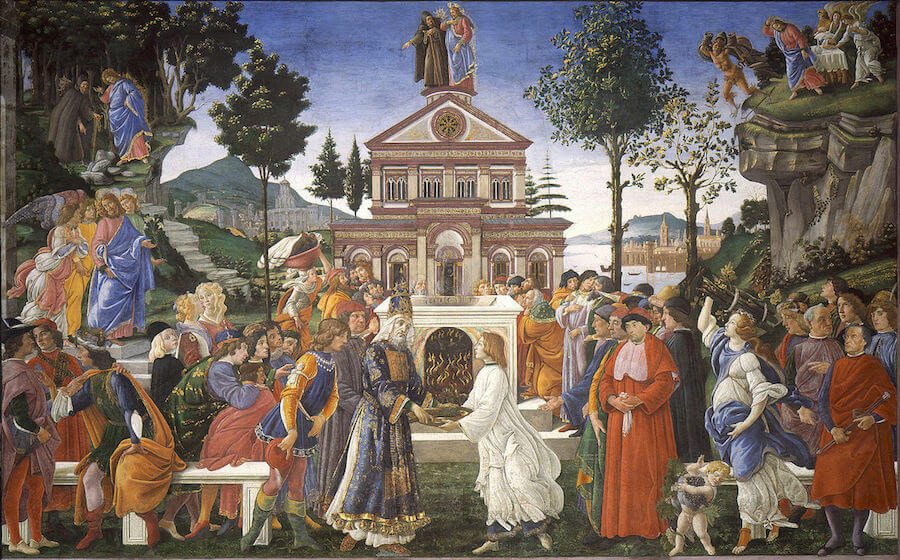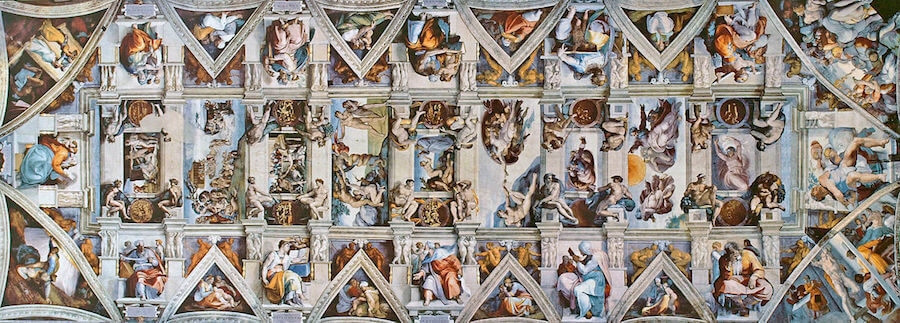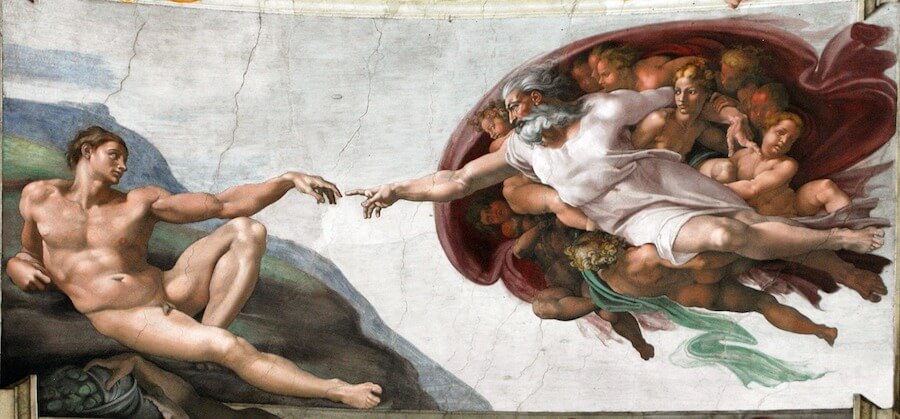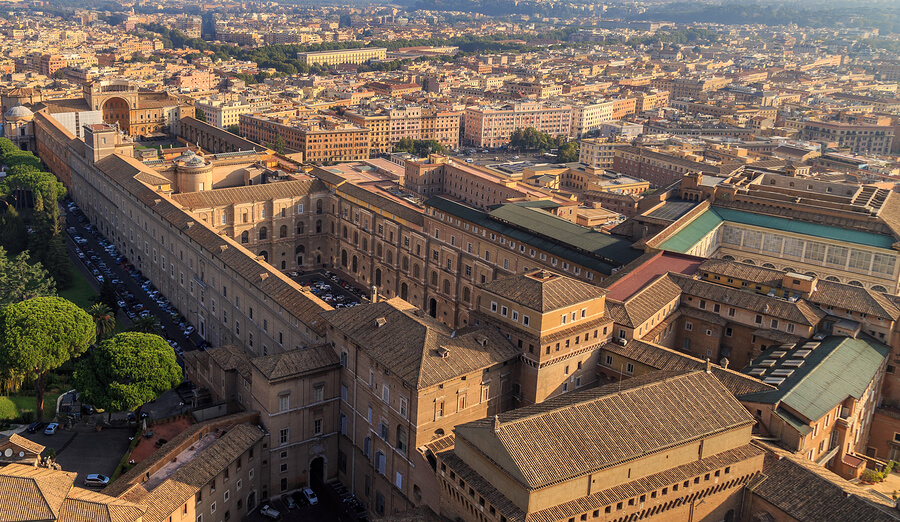The Sistine Chapel – or Cappella Sistina in Italian – is a sight to behold for the five million people a year that visit. Each time I lead a tour there, its beauty always overwhelms my guests. However, beyond the pictures, it is as fascinating as it is stunning. Here’s 15 facts about the Sistine Chapel that demonstrate just how incredible it is – as a building, and a story:
1 The Sistine Chapel is most famous for Michelangelo’s frescoes.
However, there are other works of art inside the chapel that are just as beautiful. For instance, Botticelli was at work in the Sistine Chapel before Michelangelo. He created two striking frescoes along the walls telling the story of Christ and Moses.

2 Incredibly – Michelangelo was not keen to take on the commission to paint the ceiling of the Sistine Chapel, and even when he did accept it, he was full of self-doubt.
It’s quite extraordinary to imagine this – given how the frescoes are now considered one of the world’s greatest masterpieces. Scholars believe that he thought himself a good sculptor, but not a good enough painter. He took it on because it was a commission from the Pope and it was unheard of to refuse such a request.
3 At one stage, Michelangelo thought that the commission was a trap.
He became convinced that because he couldn’t refuse, that it was in fact a set-up by his rivals, whom he thought might be keen to see him fail.
4 The ceiling frescoes took Michelangelo four years to complete. In total, they cover 12,000 square feet.
He painted the frescoes whilst standing upright. There’s a well known theory that he completed it all whilst lying on his back – but this is now thought to be nothing more than an urban legend.

5 Michelangelo did have to repaint a large portion of his work, after some of it became mouldy one year after he started.
He apparently informed the Pope, using this as proof of how he wasn’t a good painter – but the Pope asked him to continue, and once again he could not refuse. So – he repainted the work that had become mouldy. When you visit for yourself and see the detail and scale – you will get a feel for how frustrated he must have felt about this. However, since then the work has held together very well.
6 Michelangelo’s depiction of God in the frescoes was one of the first of its kind.
It shows a man, with long white hair and a beard – an image that through time has become quite common. Yet – until that point, God had not been portrayed as a person in that way.

7 Michelangelo features God six times throughout the frescoes.
However, he painted these images last since he wanted to perfect his approach first.
8 Michelangelo returned to paint the Last Judgement – that’s the panel you will see behind the altar.
He is said to have painted two self-portraits within this painting. Both are sadly negative and miserable depictions of him.
9 In the 1560s, Pope Pius IV, ordered that the nudes in Michelangelo’s paintings have fig leaves and loincloths strategically placed to hide their presumed blushes.
This work was undone between 1980 and 1999 when the frescoes underwent restoration work to remove the layers of grime that had built up over the years. As a result, the colors became much brighter – and of course the fig leaves and loincloths were removed.
10 There is a theory that Michelangelo was also demonstrating his knowledge of human anatomy via his work.
In the panel that depicts God and Adam, angels surround God – the shape around them is the same as a human brain – and it is thought that this was a demonstration of God giving humans intelligence. Others have found what they see as hidden pieces of human anatomy elsewhere in the frescoes.
11 From the outside, the building gives no hint of the artistic treasures that lie inside, or the importance of the chapel.
The external structure of the Sistine Chapel is remarkably plain. There’s no decoration or grand entrance, for example. This is quite incredible when you consider both the beauty of the inside, and of course, the fact that it is the Pope’s private chapel.

12 Building work began on the Sistine Chapel in 1475, and it was designed with defence in mind.
The chapel was created for worship, but the design did include strong and thick walls – which were intended to protect the Vatican against any attacks.
13 The architect who designed the Sistine Chapel – with worship and defence at its core – also designed the Ponte Sisto.
The Ponte Sisto is a bridge in Rome that spans the Tiber, and is considered to be another masterpiece of the age.
14 Although it was built over 500 years ago, it is still used for its original purpose.
The Sistine Chapel was completed in 1481 and held its first mass in 1483. Back then it was intended to be the Pope’s personal chapel – and that is still the case today.

15 As well as being the Pope’s personal chapel, the Sistine Chapel is also the site of the papal conclave.
This is the site where new Popes are chosen and elected by the College of Cardinals – a practise that has been in place since the 1100s.
When you visit Rome, taking the time to explore the Vatican, and indeed the Sistine Chapel should be high up on your agenda. I would definitely recommend booking a tour – like our Gray Line Rome tour of the Sistine Chapel. This way you will be able to tour with a trained guide who will really help you make the most of what you see before you. You’ll also make the best use of your time and be able to skip the lines – and with five million visitors per year, there’s usually always a line. Without a tour, it can take around 4 hours to get inside. Incidentally, at Gray Line Rome, we also do a unique first entry tour – which means you will be ahead of everyone else visiting the Sistine Chapel that day.
A little advice before you arrive, as well as booking our Sistine Chapel tour, make sure you understand the dress code. As it is a place of worship, visitors are respectfully asked to cover their body, legs and arms when inside, and to take any hats off. Large bags are also not permitted.
We thoroughly look forward to welcoming you to Rome!